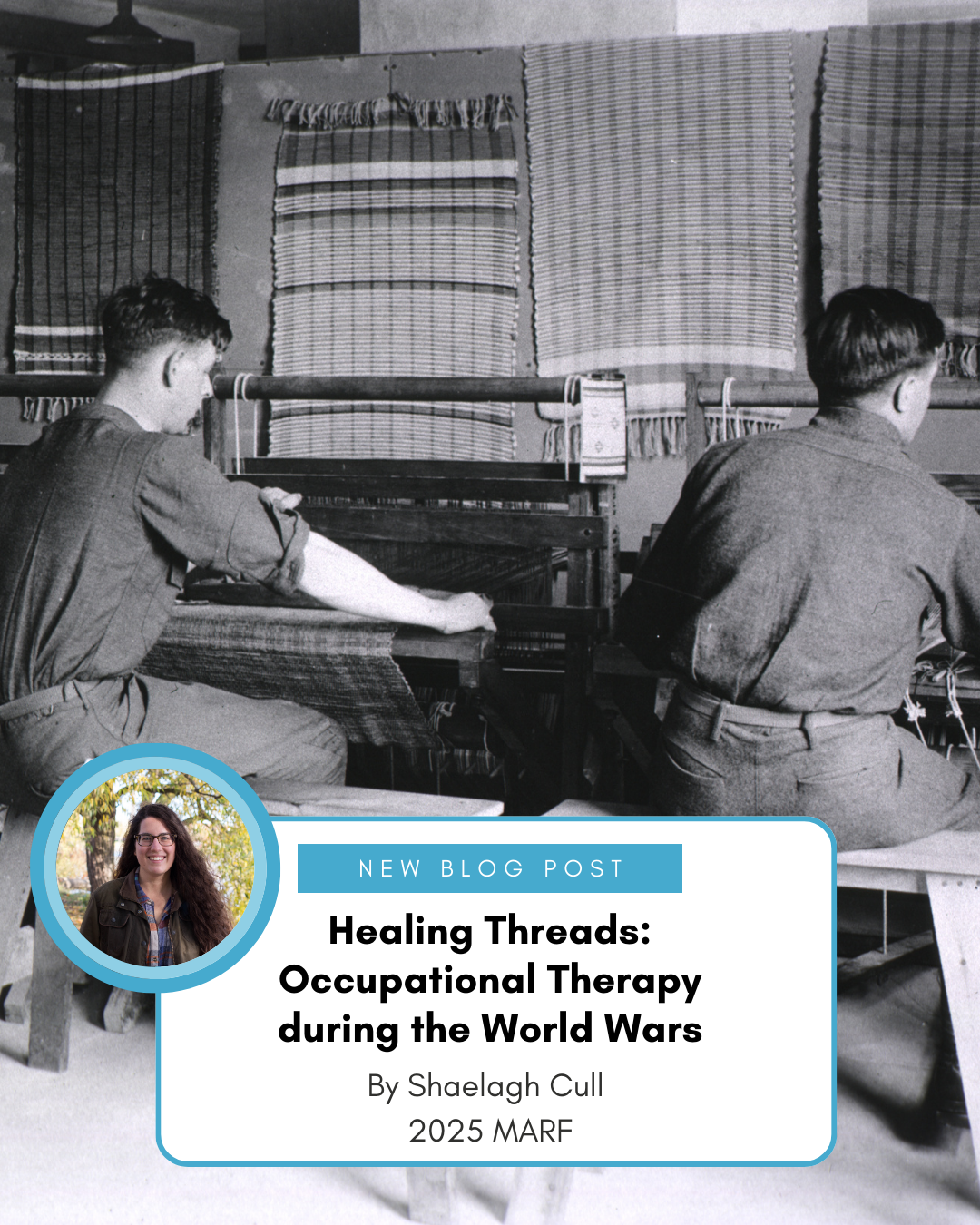MUSEUM BLOG

Cold Blooded Hot Topics: Snake iconography, Symbolism, and the Stories behind some Snake-Related Health Care Symbols.
Nearly every culture that has snakes or snake-like creatures in their region has some sort of snake mythology. Snakes are viewed as dualistic in nature, representing both aspects of good (healing, fertility, wisdom, rebirth) and evil (death, poison, trickery, harming). To understand snakes further, let's examine their life and death properties.

A Fantastical Medical Bestiary: A Few Fantastical Extras
I had a wonderful time researching and planning this exhibit, and I think visitors will really enjoy it. But, like every exhibit, you can’t show everything that you want to. So, I thought I would share some of the interesting facts and images that didn't quite make it in (all photos from the archives my own, snapped for reference during research):

Warp and Weft: An Exploration of the Leclerc Jano Loom and Weaving in Occupational Therapy
A Leclerc Jano loom provided the inspiration for my Margaret Angus Fellowship research about the history of occupational therapy. The loom almost seems out of place amongst the pill bottles, doctors’ kits, and nurses’ uniforms that surround it in the museum’s storage room (Figure 1). Objects in the MHC’s collections often bear the imprint of the doctors, nurses, and other health care professionals who touched and used the equipment, but only infrequently bear the traces of the patients that these objects served.

Mary Alice Peck, Mary Black, and Women’s Contributions to Occupational Therapy
Two names have repeatedly come up in the research for my Margaret Angus fellowship project about occupational therapy in Canada: Mary Alice Peck and Mary Black. While my previous blog posts have focused on major historical periods in the development of occupational therapy in Canada (the asylum reform movement of the late eighteenth and early nineteenth centuries and the World Wars), this post focuses on these two influential women. Peck and Black were both significant figures in the development of occupational therapy in Canada, although they epitomize different aspects of women’s roles in the field.

Healing Threads: Occupational Therapy during the World Wars
Although work, art, and craft were present in health care spaces at the turn of the twentieth century, occupational therapy as a distinct medical field largely formed in response to World War I (1914–1918).

Dr. Simge Erdogan-O’Connor Honoured with Kingston Young Professionals 40 Under 40 Award
The Kingston Economic Development Corporation has named Dr. Simge Erdogan-O’Connor as one of this year’s recipients of the Kingston Young Professionals 40 Under 40 Award. Dr. Simge Erdogan-O’Connor is the Director of the Museum of Health Care and has played a pivotal role in shaping Kingston’s cultural heritage sector since 2020.

The Early Years of Occupational Therapy in Kingston
The adoption of a therapeutic approach at the Kingston Asylum [had] proved a great success in the treatment of ‘chronic mental disease’ – using occupations in the form of work and craft to compliment routine treatment. This laid the groundwork for a new medical profession in Canada: occupational therapy.


What Role Can Medical Museums Play in 2SLGBTQI+ Communities?
As Dr. Ashley Waddington noted in her interview with us here, gender diversity and its expression cannot be limited to the medical practices we’ve come to group under gender affirming health care today. Historically, transgender, Two-Spirit, intersex and gender non-conforming or genderqueer people have existed independently of medical services like surgery or hormonal therapies.

Part 2: Gender affirming care in Kingston: in conversation with Dr. Ashley Waddington
To explore the topic of gender affirming care, we spoke to Dr. Ashley Waddington, an Associate Professor in the division of Reproductive Endocrinology and Infertility in the Department of Obstetrics and Gynaecology at Queen’s University. This is the second part of an interview with Dr. Waddington.

